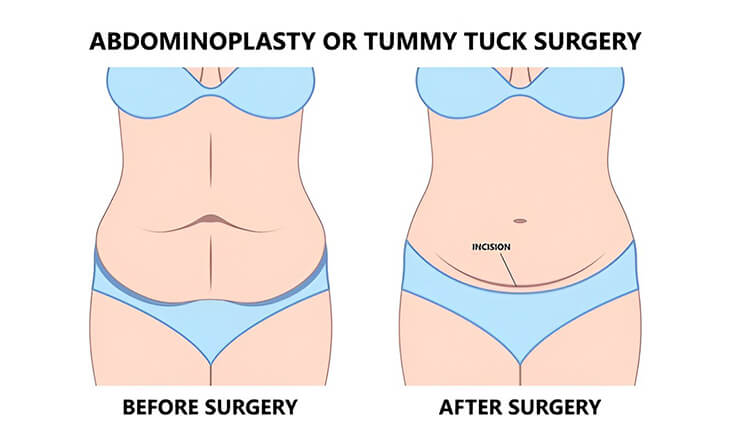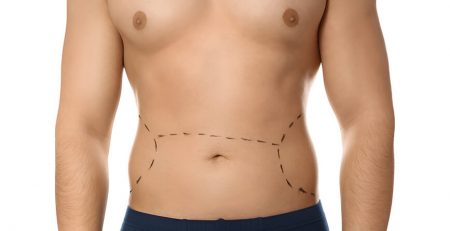What Are the Steps of a Tummy Tuck Procedure?
Are you considering a tummy tuck surgery but feeling overwhelmed by all the information out there? Don’t worry—you’re not alone! Many people who are looking to regain their confidence and achieve a flatter, firmer abdomen often find themselves asking the same question: “What exactly happens during a tummy tuck surgery procedure in Delhi?”
Let’s break it down for you in a way that makes the process clear so you can approach your surgery with confidence.
The Tummy Tuck Journey: What You Can Expect
Getting a tummy tuck surgery in Delhi is not just a physical transformation; it’s a significant personal journey. Every step is crafted to bring you closer to the body you desire while ensuring your safety and comfort. So, what does this journey look like? Let’s take a closer look.
- Consultation and Customization
Your journey begins with a detailed consultation with your surgeon. Here’s the thing: no two bodies are the same, and neither are two tummy tuck surgeries. A reputable plastic surgeon, like Dr. Lokesh Handa at Med Esthetiks, understands this and will take the time to carefully assess your unique body shape, skin elasticity, and muscle tone.
During this consultation, the surgeon will evaluate your abdominal area and listen to your goals. The aim is to create a personalised surgical plan that addresses your specific concerns—whether it’s loose skin from weight loss, excess fat, or separated muscles after pregnancy. This step is crucial as it sets the tone for the entire tummy tuck surgery procedure and ensures the outcome aligns with your expectations.
- Anaesthesia: Comfort is Key
The next step is the administration of anaesthesia. Typically, general anaesthesia is used, meaning you’ll be fully asleep during the procedure. This ensures that you remain comfortable throughout the surgery without experiencing any pain. Your surgeon will discuss the anaesthesia options with you during the consultation and explain how it will be safely administered by an experienced anesthesiologist.
- The Incision: Crafting the Flatter Tummy
Once you’re under anaesthesia, the surgery begins with the incision. The length and shape of the incision depend on the amount of excess skin you have. Most often, the incision is made horizontally between the pubic hairline and the navel. However, in cases where there is significant excess skin, a second incision around the navel may be necessary to address the upper abdomen.
This is where the artistry of the tummy tuck surgery procedure comes into play. A skilled surgeon will place the incision in such a way that it can be easily concealed by underwear or swimwear. The goal is not just to remove excess skin but to do so in a way that leaves you with a natural-looking, aesthetically pleasing result.

- Muscle Repair: Restoring Strength and Tone
One of the most important yet often overlooked aspects of a tummy tuck surgery procedure is the repair of the abdominal muscles. Many people experience a separation of the abdominal muscles, known as diastasis recti, particularly after pregnancy. During the procedure, the surgeon will suture these muscles back together, creating a firmer and more toned core.
This step is critical because it doesn’t just improve the appearance of your abdomen; it also helps restore functional strength to your core. This muscle repair is what often gives patients that tight, flat abdomen they desire.
- Removal of Excess Skin and Fat: The Transformation
After the muscles are repaired, the excess skin is trimmed away. If necessary, liposuction may be used to remove small pockets of fat to further sculpt the abdomen. This step is where the visible transformation really begins. The surgeon pulls the remaining skin down over the newly tightened abdominal muscles, like smoothing out a sheet of fabric over a fitted surface. The navel is repositioned to align with the new abdominal contours, ensuring a natural appearance.
This stage of the procedure is transformative because it not only eliminates the loose, sagging skin but also refines the overall shape and contour of your waistline.
- Closing the Incision: Precision and Care
Once the excess skin is removed, the incision is carefully closed with sutures. Precision is key here. A skilled surgeon, like Dr. Lokesh Handa, will take great care in closing the incision to minimise scarring and ensure the most aesthetically pleasing result. Special dressings or bandages will be applied to the incision area, and sometimes, a small drainage tube may be temporarily placed under the skin to drain any excess blood or fluid.
The meticulous nature of this step is often underappreciated. A well-closed incision, combined with proper post-operative care, can significantly reduce the visibility of scars over time.
The Road to Recovery: What Happens Next?
Your tummy tuck journey doesn’t end when you leave the operating room. In fact, the recovery period is just as important as the surgery itself. During your initial recovery, you’ll need to wear a compression garment to support your abdomen and reduce swelling. While it’s normal to experience some discomfort and swelling in the days following the surgery, most patients find that they can return to light activities within two weeks.
Your surgeon will provide you with detailed instructions on how to care for your incisions, manage discomfort, and gradually return to your normal routine. Follow these instructions closely to ensure a smooth recovery and the best possible results.

A Unique Insight: Why Core Strength is Key Post-Surgery
Here’s something not commonly talked about: while your abdominal muscles are repaired during the surgery, maintaining core strength post-surgery is crucial for long-term results. Engaging in gentle core-strengthening exercises (under the guidance of your surgeon) as you recover can help maintain the integrity of the repair and enhance your overall abdominal tone. These exercises can also help prevent future issues, such as muscle separation, which is why they should be part of your long-term wellness plan.
Achieve Your Dream Body with Dr. Lokesh Handa
The tummy tuck surgery is an empowering procedure that can restore your confidence and help you achieve the body you’ve been striving for. With the right surgeon by your side, the process is safe, effective, and life-changing.
If you’re considering a tummy tuck surgery procedure, it’s essential to choose a surgeon who understands the art and science of body contouring. Dr. Lokesh Handa, a board-certified plastic surgeon at Med Esthetiks in Delhi, has extensive experience in performing tummy tuck surgeries with natural-looking results. Ready to take the next step towards your transformation? Visit Med Esthetiks to book a consultation with Dr. Lokesh Handa today!

Dr. Lokesh Handa
M.S, M.Ch
Sr Consultant Plastic, Aesthetic and
Hair Transplant Surgeon
Dr. Lokesh Handa, a board-certified plastic surgeon with over 15 years of experience, holds esteemed titles of M.S. and M.Ch. He serves as a Senior Consultant in Plastic, Aesthetic, and Hair Transplant Surgery.
As the Director of Med Esthetiks, his commitment to excellence is evident. Dr. Lokesh Handa is a distinguished member of renowned organizations, including ISAPS (International Society of Aesthetic Plastic Surgeons), APSI (Association of Plastic Surgeons of India), and IAAPS (Indian Association of Aesthetic Plastic Surgeons). With extensive expertise, he blends precision and artistry, offering unparalleled care in the realm of plastic surgery and contributing significantly to the advancement of aesthetic practices.
To book an appointment, call: +91-8800203431 or email: care@medesthetiks.com











